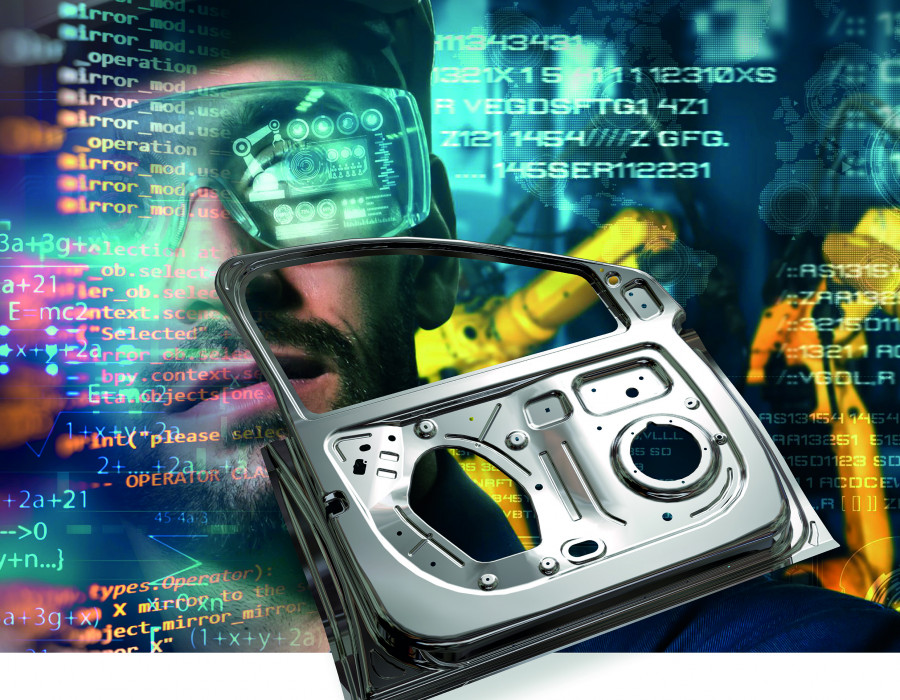AutoForm Forming R11: Accuracy in Sheet Metal Forming

AutoForm Engineering has unveiled its latest software version AutoForm Forming R11. Users can particularly benefit from new measurement scenarios, consideration of temperature effects in cold forming, realistic modeling of processes with multiple parts, over-crowning by using the elastic tool deflection calculation and the creation of CAD surfaces for manufacturing within the AutoForm Forming suite.
New measurement scenarios: AutoForm Forming R11 brings significant enhancements to springback measurement scenarios. The newly developed features enable users to measure springback just as it is happening in the real manufacturing process. Several measurement scenarios can be evaluated and compared at the same time, allowing the user to see how the part is affected in each scenario. With this resulting greater understanding of the part’s springback behavior, the user can select the most appropriate scenario to compensate springback.
In practice, process engineers are often faced with unexpected failures in production under apparently identical conditions. Therefore, gaining deeper insights into how the temperature of the part and tool increases as well as how this rise in temperature affects the production process is extremely beneficial. AutoForm Forming R11 with its newly developed smart ramp-up methodology enables the calculation of temperature effects in cold forming. This new capability enables process engineers to better predict part feasibility and ensure process robustness.
Realistic modeling of processes with multiple parts: AutoForm Forming R11 enables the realistic modeling of processes with multiple parts by taking into consideration both part separation and multiple blank cases. The software allows for the efficient engineering of separated parts and enables users to carry out various calculations. In addition, the software can be applied when several parts with individually assigned blanks, known as multiple blanks, have to be manufactured on the same press. It enables users to consider how the parts influence each other in order to make geometry modifications and position the parts within the press as well as determine the appropriate cushion forces to optimize the forming behavior.
Tool deflection is an important issue in the manufacturing of parts as it leads to an increased number of tryout loops, rejects and press downtime in production. To ensure efficient production, deflection has to be compensated. AutoForm Forming R11 enables users to compensate tool deflection, a process known as overcrowning, by using the elastic tool deflection calculation. The results can then be used for the milling data in order to avoid unnecessary tryout loops.
Markus Thomma, CMO of the AutoForm Group, stated: “We are pleased that with our new software version AutoForm Forming R11, users can reach a new level of accuracy in sheet metal forming. We are looking forward to welcoming our user community at our events dedicated to this release as well as to AutoForm-DieDesignerPlus, our recently unveiled software for the creation of high-quality CAD surfaces for manufacturing within the AutoForm Forming suite. The events will take place all over the world in the coming weeks”.

Santana Motors S.L., Zhengzhou Nissan Automobile Co., Ltd. (ZZ Nissan) y Anhui Coronet Tech Co. han establecido una alianza estratégica para la producción de vehículos todoterreno innovadores en la histórica planta de Santana Factory en Linares (España).

Un total de 65.514 profesionales procedentes de 80 países y 710 empresas expositoras se dieron cita en esta feria líder del sector de la posventa de automoción en el sur de Europa, que ocupó 100.000 m² distribuidos en seis pabellones.

DS Smith Tecnicarton, una empresa de International Paper, ha anunciado el traslado de su planta de producción ubicada en Riba-roja de Turia a una nueva sede en Almussafes.Ambas localidades se encuentran en la provincia de Valencia.
![EPMC ReUse 06[1] EPMC ReUse 06[1]](/images/showid2/7321823?w=981&zc=4&zc=1&w=280&h=209)
JLR está reduciendo los residuos en todas sus operaciones industriales en el Reino Unido y Europa mediante una campaña de reutilización, reacondicionamiento, reconversión y reciclaje que supone un valor de 100 millones de libras.

James Thorpe, Global Product Manager for Hole Making and Composite Machining en Sandvik Coromant, explica cómo una nueva herramienta de taladrado puede mejorar los objetivos de producción de fabricación para aplicaciones multimaterial.
